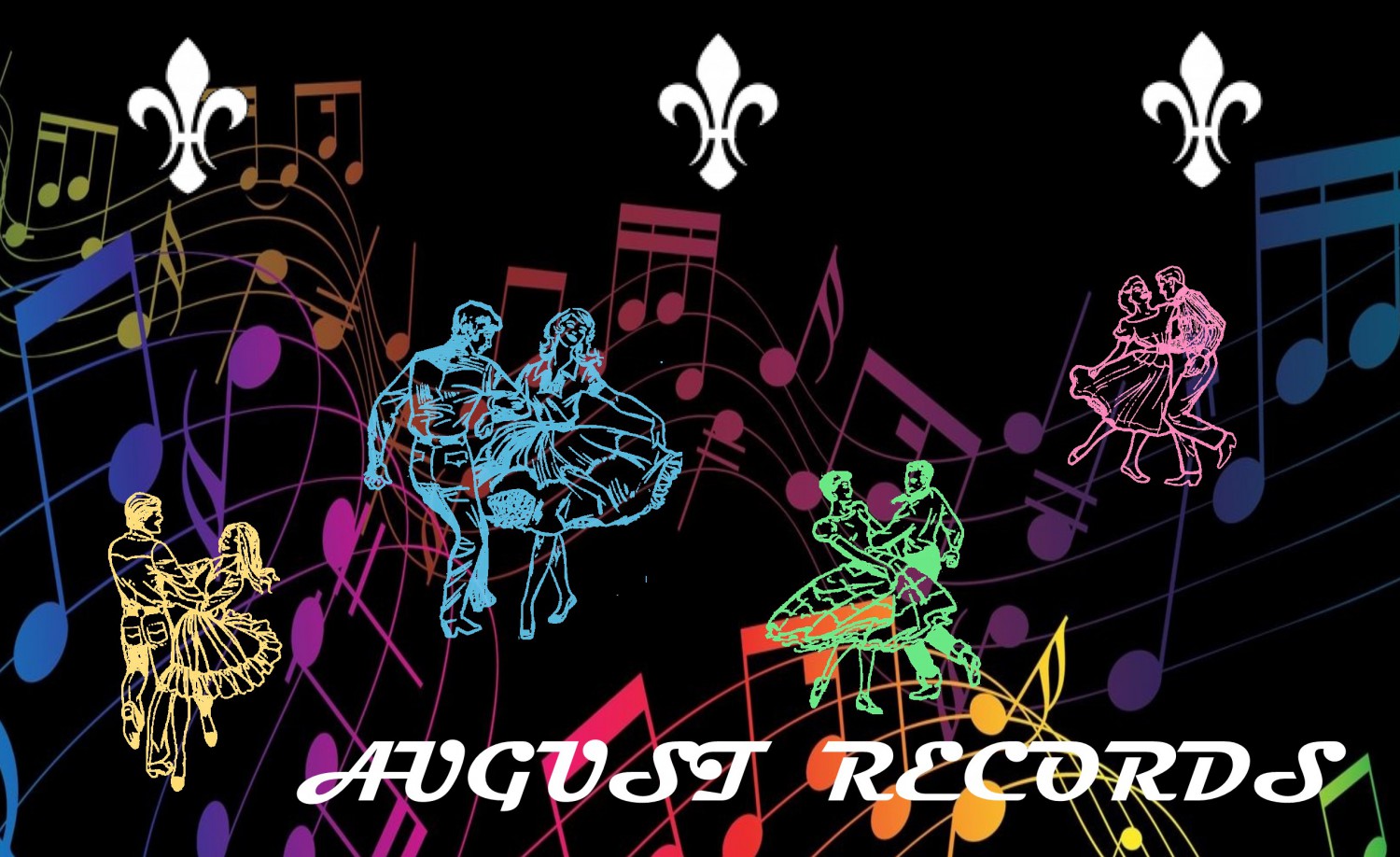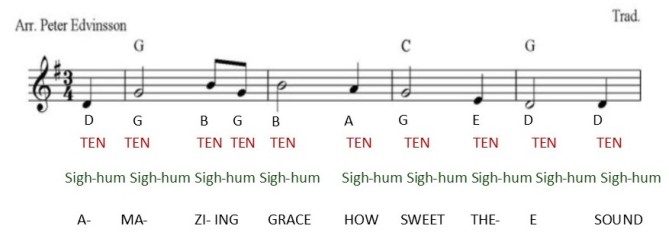Great Tips For Improving Square Dance Calling Performance By Strengthening Your Voice
Square dance callers have a different way of using their voice to execute a night’s dance. Although there is singing involved, the hoedown or patter portion of the dance involves a great deal of enunciation and semi-gutteral words that can wreak havoc on a caller’s voice. Below are some ways to not only strengthen your voice and increase your “vocal endurance” but, over time, these exercises will improve your singing range, the quality of your voice, and your vocal performance.
Warm Up
Warming your voice is essential for both practice and live performance. The length of time it will take you to become fully warmed up will depend on several variables, ranging from the room temperature and the humidity in the air to how active you’ve been during the day. Generally, the more regularly you practice with your voice, the better your voice will be prepared for more intense singing. Along with this comes the improvement of tonal warmth and vocal range. Getting your vocal chords warm is key to sounding your best whenever you deliver the square dance calls. I recommend these vocal warm-ups to get you ready to call both in practice and just before your dance:
The Fry Tone
The fry tone is a great way to warm up your voice and get your breathing control involved in the process. This is a low, crackling, gutteral sound that you make using very little air and it sounds like a bullfrog croaking. You can use any vowel to practice this technique and once you become comfortable with the fry tone sound you can use it to break your voice into a singing tone to sing actual notes. Try a fry tone at a low level of volume and hold the tone for as long as you can. This helps with controlling how little air you need to sing a note and how long you can sustain a single note. Then start a fry tone, roll it over to a singing tone and hold the note for as long as you can, riding that single breath for as long as you can.
The Lip Trill (Spaceship Trill)
This technique will open your vocal range up by keeping your laranx in a relaxed state. By making a sound like a small child imitating the sound of motorboat or a spaceship, the idea is a tongue roll like the Spanish “rrrrrrr.” Combine with this the flapping of your lips as you smile wide. Keep your voice register on the low end of your vocal range and increase the height of the notes that you babble with your lips flapping in a loose manner until you reach the high end of your vocal range. Keep the edge of the lips turned up in a smile throughout. Bring the trill back down to the note where you started the trill. This will keep your voice from getting tight and over time and practice, your singing voice will improve. Practicing this will improve your vocal range and encourage a loose throat while singing.
The “Ten” Bounce
Use a keyboard and play one note (starting with a comfortable low note) and while you do this, grin as wide as you can. Now say the word “ten” with a bouncing and stacatto style that is NOT singing the word, but still matching the “tens” with the tone of the keyboard note. Do this with five consecutive “tens” bouncing the notes as you work a note at a time chromatically up the keyboard. That is five “tens” at a time.
This technique forces you to keep your voice in good forward placement and make sure that you use your stomach muscles to help provide the air that you will need to make these notes “bounce.” This forces “diaphram” breathing and support and good placement in the facial “masque” that is used to make singing notes resonate. Project but do not overdrive your voice when doing this. Work your way up to a comfortable higher end on your natural singing range and then work your way back down. The results will astound you once you practice this technique.
Pitch and Timing
The Sigh-Hum
Humming is a great way to practice singing and improving your ability to sing a melody in pitch. Start things off with a soft and gentle yawn. This relaxes the laranx muscles and the tongue muscles and will set you up for the Sigh-hum. Now play a comfortable note for you to sing on the piano. Sigh and then gently hum the note that you play in unison with the played note. There are two things accomplished with this technique. First, you will be practicing singing in pitch with the note. Second, you are focusing on keeping your throat loose and relaxed so that you can sing higher, longer, and without straining.
Sigh-hum at least twice on each note that you play as you climb up the piano to the upper notes in your vocal range and work your way back down to where you started.
Pitch Improvement
Singing is a skill that can always use a little improvement no matter how much anyone has been singing throughout their lives. One way to improve is working on pitch accuracy with a piano or keyboard. In other words, the notes that you sing must land directly on the target pitch of tones in a melody. First, you never “hit” a note. You “sing” a note. Sing all notes and sing them in pitch by approaching them softly at first and with more authority after a few times. Authority means with more drive and energy and a little more volume and the vibrato in your voice will naturally develop over time. Always project your voice but never overdrive your voice and cause it to strain. Avoid straining your voice at all cost. Straining can lead to long-term and sometimes permanent damage to your vocal chords. Once the tightness in your throat starts, it is very hard to cycle of tightness to correct.
Play a simple and short melody of only three or four notes on a piano or keyboard and sing with the tones using the sigh-hum, ten bounces and then sing the words to the simple melody of the song you choose. Do this slowly and evenly and you will see improvement over time.
Using classic songs like Amazing Grace can offer some more applicable exercises to help get your ears and vocal chords in sync and this will add to your development of the melodic singing nature of your human voice. Use a piano or electronic keyboard and play the notes and “bounce tens” to the notes in the melody. Then sigh-hum the notes individually and hold the hummed tone for as long as you can and progress through the entire melody one note at a time. Then work on slowly singing the notes using the lyrics and begin slowly, then work your way into singing the phrase “Amazing Grace how sweet the sound” at different tempos and with as much feeling as you can inflect with your voice:
Practice With a Drum Machine or Metronome
Use a drum machine to practice some short choreography sequences that you use often and you will improve your timing. For more information on practicing with a metronome or drum machine check out additional instruction at https://shaunwerkelesquaredancecalleraugustrecords.wordpress.com/2015/04/20/modern-western-square-dance-calling-timing-is-everything/
By practicing timing it will elevate your ability to be inside of the square dance music, to be an integral part of what is happening around you with the dancers, to be able to call even the simplest square dance movements with an on spot, lazer-sharp groove that needs no musical accompaniment to make people want to get up and square dance. This only comes with practice.
Practice With Confidence
There is nothing more real and important than believing in what you do and what you can convey musically to the dancers over all else.
Regardless of opinions, spouting uneducated critics, and any insecurity and doubts you may have, you have to believe that your abilities are strong and that the square dance world is fortunate to have you, a master of calling, of which you have shared your best choreographic ideas along with light humor and interesting and engaging talk and unique and entertaining music. Make sure that your voice sounds confident, warm, sincere and friendly whenever you are square dance calling.
Maintain this belief and it will will drive you to improve and to perform with a command that other square dance callers might lack. It is that simple. You have the ability to constantly develop ideas and take risks in practice and experiment with artistic freedom largely because you will have the strength of belief and with that unshakeable belief you will need little else.
Practice!
This is perhaps the most helpful training article I have presented so far. Feel free to call me at any time if you have a square dance caller question!
Best Regards,
Shaun Werkele
303-250-4735
Mission Statement: The purpose of this post is to create a greater visibility of the square dance activity for future dance population growth on a national and local level. The information provided here serves as a source for square dance caller education, training, and perspectives on dance. Future articles will be developed to improve the programs of square dancing and how those learning to square dance call can help contribute to the preservation of both modern western square dancing and traditional square dancing and to aid in the growth of the square dance activity.


Pingback: Square Dance Singing Calls: Practicing Basics | Square Dance Caller Shaun Werkele August Records
Pingback: Modern Western Square Dance Calling: How to Sing Better & Effectively | Square Dance Caller Shaun Werkele August Records
Pingback: Square Dance Calling: Understanding Timing & Musical Phrasing | Square Dance Caller Shaun Werkele August Records